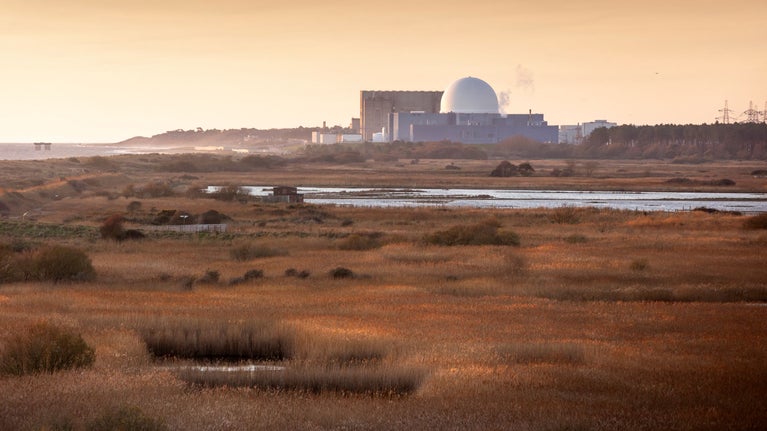Sizewell C: Impact on Dunwich Heath

Dunwich Heath and Beach is home to 95 hectares of lowland coastal heathland, one of the UK’s rarest habitats, and sits around 3.5km north of the proposed Sizewell C site. We believe the development will have a significant impact on the habitat and the landscape - for people, wildlife, and the environment.
What is Sizewell C?
In 2009 the government announced that Sizewell on the Suffolk coast would be a suitable location for a new nuclear power station.
In 2021 EDF Energy put forward a proposal to construct and operate Sizewell C (SZC), which will see a new two-reactor nuclear power station built adjacent to the existing Sizewell A (which is in the process of being decommissioned) and Sizewell B (single reactor site). In 2024, construction began.
Together the permanent reactor site and temporary construction site covers an area over 1000ha, which encroaches onto important protected landscapes, many of them designated due to how special they are.
This will be the largest construction project in Europe and will take an estimated 12 years to complete (to 2036) at a cost of £20bn.

How will it impact Dunwich Heath?
The National Trust cares for Dunwich Heath and Beach, which is a rare and precious habitat that is carefully managed to support nature and provide people with access to the wild beauty of the Suffolk landscape.
Given the elevated position of Dunwich Heath, with views overlooking Sizewell, the development will have a significant impact on the area and the heathland in our care.
Areas of potential impact
As part of the consultation process, we anticipate that the construction and operation of Sizewell C could result in:
-
Less access for walking and recreation, especially along the Suffolk Coast Path and Sandlings Walk, and potentially increased numbers of visitors at other nearby places.
-
Threats to wildlife habitats, including ground-nesting birds and protected species, at Dunwich Heath and across the whole Special Area of Conservation (SAC) and Special Protected Area (SPA).
-
A negative impact on this designated National Landscape, including the setting and views at Dunwich Heath and Beach.
-
Light pollution, which could be particularly damaging to the dark skies area at Dunwich Heath, as well as species of night-flying insects and bats.
-
Sound pollution, particularly during the construction phase, which could negatively impact specialist species.
-
The unknown long-term impact on coastal and cliff geomorphology, including climate change scenarios.

Our commitment to people and nature
We will work with partner environmental organisations, local authorities and other statutory bodies to ensure that the developer fulfils its commitments in terms of mitigation and monitoring, as set out in the decision, to ensure the protection of Dunwich Heath and Beach during the construction and operation of the nuclear power station.
Funding
A resilience fund was set up and agreed between East Suffolk Council, SZC and the National Trust to mitigate impacts of the development on Dunwich Heath during the construction phase.
-
This will support additional staff resources to help us look after this special place and engage with visitors, many of whom will have questions.
-
Funding for material to repair or replace infrastructure impacted by additional demand, because of the development.
-
Compensation funding for projects on National Trust land to help take the focus away from the construction site and enhance other areas.
-
Funding for heritage enhancements in and around Coastguard Cottages.
Latest news
Construction on the infrastructure to support the development of SZC has begun. At Dunwich Heath, you might notice:
-
Increased light levels from the development site, especially during the darker winter and spring evenings
-
Occasional bangs and rumbles as the development site is cleared of WW2 unexploded ordnance.
-
Significant work along the Sizewell beach front as sea defences are constructed.
-
Large ships and floating platforms surveying the seabed in preparation for construction of the temporary jetties.
-
On your journey to and from Dunwich Heath, you may see changes near some of the local roads as park and ride facilities are constructed for the growing workforce.